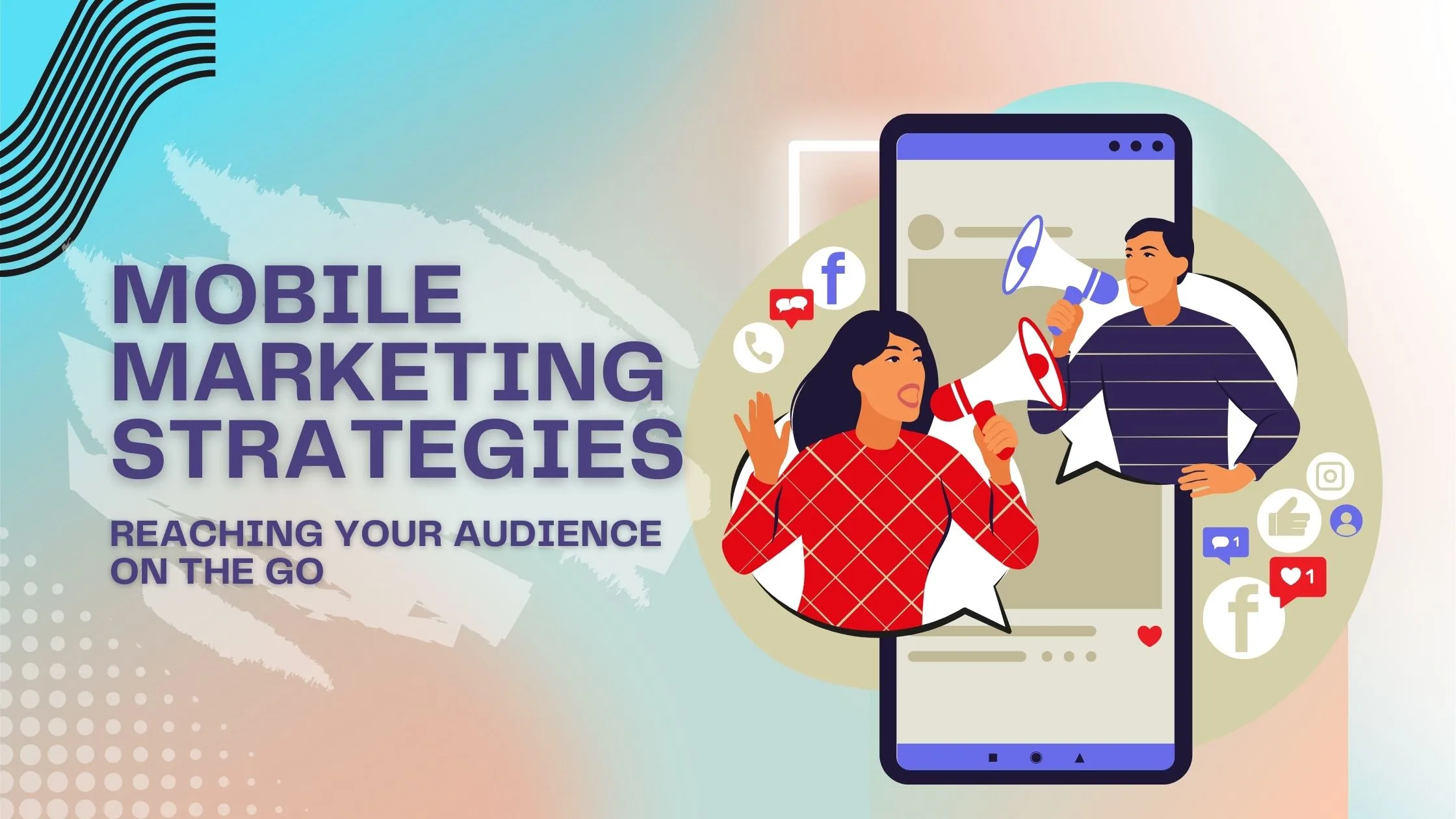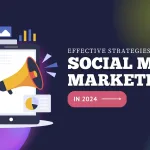Mobile Marketing Strategies: Reaching Your Audience on the Go
Are you tired of your marketing efforts falling flat because they’re not reaching your target audience where they spend most of their time – on their mobile devices? Well, it’s time to step up your game and tap into the power of mobile marketing strategies! In today’s fast-paced world, people are constantly on the go, glued to their smartphones or tablets. So if you want to successfully connect with your audience and stand out from the competition, it’s crucial to adapt and optimize your marketing for mobile. In this blog post, we’ll explore some effective strategies that will help you reach and engage with your audience wherever they may be. Get ready to take your marketing game to a whole new level!
Introduction to Mobile Marketing and Its Importance
In today’s fast-paced world, more and more people are relying on their mobile devices for all aspects of their daily lives. From communication to shopping, entertainment to information gathering, the smartphone has become an essential tool for modern living. This shift in consumer behavior has had a significant impact on the way businesses reach and engage with their target audience.
Mobile marketing is a digital marketing strategy that focuses on reaching potential customers through their mobile devices such as smartphones and tablets. It involves various tactics like SMS messaging, mobile apps, social media ads, and email marketing specifically tailored for mobile users.
With the rise of smartphones and mobile internet usage, implementing effective mobile marketing strategies has become crucial for businesses of all sizes. Let’s take a closer look at why mobile marketing is so important in today’s digital landscape.
Widespread Usage of Mobile Devices
According to Statista, there are over 3.5 billion smartphone users worldwide in 2020, accounting for nearly half of the global population. In addition to this staggering number, studies show that people spend an average of 3 hours per day on their phones – surpassing TV viewership by almost an hour! These numbers clearly indicate that consumers are increasingly dependent on their mobile devices for information and entertainment.
By leveraging the popularity and widespread usage of smartphones through targeted mobile marketing efforts, businesses can tap into a vast pool of potential customers.
Understanding Your Target Audience
Before diving into any marketing strategy, it is crucial to have a deep understanding of your target audience. This is especially important in the world of mobile marketing where consumers are constantly on the go and bombarded with information from various sources. In order to effectively reach your audience on their mobile devices, you need to understand who they are, what they want, and how they behave.
1. Demographics:
The first step in understanding your target audience for mobile marketing is to gather information about their demographics. This includes factors such as age, gender, income level, education level, occupation, and location. Knowing these details can help you create targeted campaigns that resonate with specific groups of people.
2. Behavior:
In addition to demographics, it is important to understand the behavior of your target audience. This includes how often they use their mobile devices, what types of apps they use, and what actions they take on those apps. For example, if you are targeting a younger demographic who spends most of their time on social media apps like Instagram or Snapchat, then creating visual content for those platforms would be more effective than traditional text-based ads.
3. Needs and Interests:
Knowing the needs and interests of your target audience can help you tailor your messaging and offers accordingly. Conduct market research or surveys to gain insights into what motivates them and what problems they are looking to solve through their mobile devices.
Types of Mobile Marketing Strategies
Mobile marketing is a constantly evolving field, with new strategies and techniques emerging all the time. In order to effectively reach your audience on the go, it’s important to understand the different types of mobile marketing strategies that are available. Here are some of the most effective approaches to consider:
1. SMS (Short Message Service) Marketing:
SMS marketing involves sending promotional messages directly to a consumer’s mobile device via text message. This type of marketing has been around for quite some time and is still widely used due to its effectiveness in reaching a large audience quickly. SMS messages have an open rate of over 98%, making them a highly reliable form of communication.
2. App-based Marketing:
With the increasing popularity of smartphones, app-based marketing has become an essential strategy for businesses looking to reach their customers on the go. This involves promoting products or services through mobile applications, which can be downloaded from app stores such as Apple’s App Store or Google Play Store.
3. QR Codes:
Quick Response (QR) codes are scannable barcodes that can be easily read by smartphone cameras. They can be placed on various forms of advertising material such as posters, flyers, business cards, etc., and when scanned, they direct users to specific landing pages or websites with more information about a product or service.
– SMS Marketing
SMS (Short Message Service) marketing is a powerful mobile marketing strategy that allows businesses to reach their target audience through text messages. With the rise of smartphones and the increasing reliance on mobile devices, SMS marketing has become an essential tool for businesses looking to connect with their customers on the go.
The primary advantage of SMS marketing is its directness and immediacy. Text messages have an open rate of 98%, making it one of the most effective ways to reach your audience. Unlike emails or social media posts, which can get lost in busy inboxes or newsfeeds, text messages are almost always read within minutes of being received.
Moreover, SMS marketing allows you to personalize your message and tailor it specifically to your target audience. By segmenting your customer database based on demographics or past behaviors, you can send targeted messages that will resonate with each segment individually.
Another benefit of SMS marketing is its cost-effectiveness. Compared to traditional advertising methods like TV, radio, or print ads, sending a text message is relatively inexpensive. This makes it an ideal option for small businesses with limited marketing budgets.
SMS marketing also offers a high return on investment (ROI). According to research by Mobile Marketing Watch, SMS campaigns have an average ROI of 36%. This means that for every dollar spent on SMS marketing, a business can expect to generate $36 in revenue.
– In-App Advertising
In-app advertising refers to the placement of ads within a mobile application. With the rise of smartphone usage, in-app advertising has become an integral part of mobile marketing strategies.
The popularity of in-app advertising can be attributed to its ability to target specific audiences and deliver highly relevant and personalized advertisements. As users spend a significant amount of time on their smartphones using various apps, in-app advertising provides a unique opportunity for businesses to reach their target audience directly.
One of the key benefits of in-app advertising is its non-intrusive nature. Unlike traditional forms of advertising such as TV commercials or banner ads, in-app ads do not disrupt the user experience. They are seamlessly integrated into the app’s interface, making them less likely to be ignored or considered as spam by users.
Additionally, in-app ads can also take advantage of native ad formats which blend seamlessly with the app’s content. These native ads have been found to have higher engagement rates and are perceived as more trustworthy by users compared to other types of digital advertisements.
Another advantage of in-app advertising is its effectiveness in reaching a highly engaged audience. As users actively choose to download and use specific apps, they are more likely to pay attention to the ads displayed within them. This level of engagement allows businesses to create targeted campaigns that resonate with their audience better.
– Mobile-Friendly Websites
In today’s digital age, a strong online presence is crucial for any business to succeed. With the increasing use of smartphones and tablets, having a mobile-friendly website has become an essential component of any successful marketing strategy.
A mobile-friendly website refers to a website that is specifically designed and optimized for viewing on smaller screens, such as those on smartphones and tablets. This means that the layout, content, and functionality of the website are adjusted to provide the best user experience on these devices.
Why is having a mobile-friendly website so important?
1. Reach your audience on-the-go: The number of people accessing the internet through their mobile devices has surpassed desktop usage. This means that if your website is not optimized for mobile, you could be missing out on a large portion of potential customers who are constantly connected to their phones.
2. Improved user experience: A mobile-friendly website ensures that your visitors can easily navigate through your site without having to zoom in or scroll horizontally. It also provides faster loading times and avoids any formatting issues, making it more convenient for users to find what they are looking for.
3. Boosts SEO rankings: Google has made it clear that having a mobile-friendly website is essential for improving search engine rankings. Websites that are not optimized for mobile will have lower visibility in search results, which can significantly affect traffic and leads.
– Location-Based Marketing
Location-based marketing is a powerful mobile marketing strategy that allows businesses to target their audience based on their geographical location. It utilizes location data from mobile devices to deliver personalized and relevant content to users in real-time, making it a highly effective way to reach consumers on the go.
One of the main benefits of location-based marketing is its ability to create a more personalized and targeted approach towards advertising. By utilizing GPS technology, businesses can send relevant offers, promotions, and messages directly to potential customers who are in close proximity to their store or business. This not only increases the chances of conversion but also improves the overall customer experience by providing them with timely and relevant information.
Another advantage of location-based marketing is its ability to drive foot traffic to physical stores. With the rise of online shopping, brick-and-mortar stores have faced challenges in attracting customers. However, with location-based marketing, businesses can entice nearby shoppers with exclusive deals or discounts that they can redeem in-store. This not only helps increase foot traffic but also gives businesses an opportunity to convert these visitors into loyal customers.
In addition, location-based marketing allows for enhanced targeting capabilities for businesses. By analyzing customer data such as demographics, interests and behaviors alongside their geographic location, businesses can develop highly targeted campaigns that resonate with their audience on a more personal level. This results in higher engagement rates and better ROI (return on investment) for marketing efforts.
– Influencer Marketing on Social Media Platforms
In today’s digital age, social media has become an integral part of our daily lives. With the majority of people owning smartphones and being constantly connected to their social media accounts, it has become a powerful tool for businesses to reach and connect with their target audience. This is where influencer marketing on social media platforms comes into play.
Influencer marketing involves partnering with popular and influential individuals on social media, who have a large following and strong influence over their followers’ purchasing decisions. These individuals can be celebrities, bloggers, vloggers, or even micro-influencers with smaller but highly engaged audiences. By leveraging their credibility and trust among their followers, businesses can effectively promote their products or services through these influencers.
One of the main advantages of influencer marketing on social media platforms is its ability to reach a highly targeted audience. Influencers often have a specific niche or interest that they cater to, which means that brands can partner with influencers whose audience aligns with their target market. This ensures that the brand’s message will be seen by the right people who are more likely to be interested in what they have to offer.
Tips for Creating Effective Mobile Marketing Campaigns
Creating effective mobile marketing campaigns is essential for businesses looking to reach their audience on the go. With the rise of smartphones and the increasing use of mobile devices, it has become crucial for companies to optimize their marketing efforts for mobile platforms. In this section, we will discuss some useful tips that can help you create effective mobile marketing campaigns.
1. Understand Your Target Audience
The first step in creating a successful mobile marketing campaign is understanding your target audience. You need to know who they are, what they like, and how they use their mobile devices. This information will help you tailor your campaign to appeal to them and increase your chances of success.
2. Use Responsive Design
With so many different screen sizes and device types available, it’s important to make sure that your campaign is optimized for all of them. Using responsive design allows your content to adapt seamlessly to any screen size or device type, providing a better user experience for your audience.
3. Keep Your Message Short and Concise
Mobile users have shorter attention spans compared to desktop users, so it’s important to keep your message short and concise when creating a mobile marketing campaign. Use simple language and get straight to the point in order to grab the user’s attention quickly.
Case Studies of Successful Mobile Marketing Campaigns
Mobile marketing has become an essential tool for businesses looking to reach their target audience on the go. With the increasing use of smartphones and other mobile devices, it has become crucial for companies to develop effective mobile marketing strategies in order to stay competitive in today’s digital landscape.
To gain a better understanding of how successful mobile marketing campaigns are executed, let’s take a closer look at some case studies of businesses that have effectively utilized this strategy.
1. Coca-Cola: “Share a Coke” Campaign
In 2014, Coca-Cola launched its “Share a Coke” campaign where they replaced their iconic logo with popular names and phrases on their bottles and cans. The campaign was aimed at encouraging people to share a coke with someone special and capture the moment by using the hashtag #shareacoke.
This campaign was hugely successful as it not only increased sales but also generated significant buzz on social media platforms. By incorporating mobile marketing tactics such as using hashtags and personalized packaging, Coca-Cola was able to connect with its audience in a fun and engaging way.
Common Mistakes to Avoid in Mobile Marketing
Mobile marketing has become an essential tool for businesses looking to reach and engage with their target audience. However, with the ever-evolving landscape of mobile technology and consumer behavior, it can be easy to make mistakes that can hinder the success of your mobile marketing efforts. In this section, we will discuss some common mistakes to avoid in mobile marketing.
1. Not Having a Mobile-Optimized Website
One of the biggest mistakes businesses make in mobile marketing is not having a website that is optimized for mobile devices. With more and more people accessing the internet through their smartphones and tablets, it is crucial to have a website that provides a seamless user experience on smaller screens. Failure to do so can result in high bounce rates and lost opportunities.
2. Ignoring User Experience
In today’s fast-paced world, consumers expect instant gratification when browsing online or engaging with brands on social media platforms. Therefore, ignoring user experience (UX) in your mobile marketing strategy can lead to disengagement from your audience. Make sure your website is easy to navigate, loads quickly, and has clear call-to-action buttons for optimal UX.
Future Trends in Mobile Marketing
The world of mobile marketing is constantly evolving, and staying on top of the latest trends is crucial for businesses looking to reach their audience on-the-go. In this section, we will explore some of the future trends in mobile marketing that are expected to shape the industry in the coming years.
1. Personalization through AI and Machine Learning: With advancements in artificial intelligence (AI) and machine learning technology, marketers will be able to personalize their messaging and offers even further. By analyzing user data such as browsing history, location, and preferences, AI can provide more targeted and relevant content for individual users. This level of personalization not only improves the user experience but also increases the chances of conversion.
2. Augmented Reality (AR) Integration: AR has already made its mark in mobile gaming apps like Pokemon Go, but its potential for marketing is yet to be fully explored. In the near future, we can expect more brands to incorporate AR into their mobile marketing strategies to create immersive experiences for their customers.
3. Voice Search Optimization: As voice assistants like Siri, Alexa, and Google Assistant continue to gain popularity among consumers, optimizing your mobile content for voice search will become essential. This means adapting your SEO strategy to include long-tail keywords that are more conversational in nature.
Conclusion:
Mobile marketing is a powerful tool for businesses to reach their audience on the go. With the increasing use of smartphones and other mobile devices, it has become crucial for businesses to adapt their marketing strategies to target this constantly connected audience.
One of the key advantages of mobile marketing is its ability to reach a large and diverse audience. As more people rely on their mobile devices for everything from communication to entertainment, businesses have an opportunity to tap into this vast market. By leveraging various mobile platforms such as social media, text messaging, and apps, companies can easily engage with potential customers and build brand awareness.





